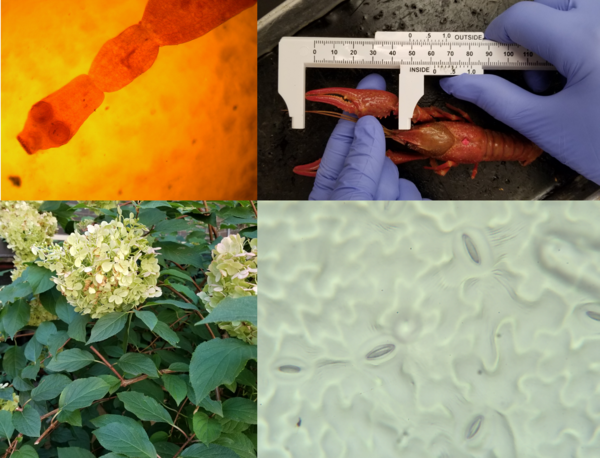
We have designed three laboratory modules for an introductory organismal biology course with an emphasis on quantitative reasoning and data analysis skills. Module 1 tests for dimorphism in crayfish chelae using a paired statistical design. Module 2 tests for allometric growth of tapeworm hook structures using a regression model. Module 3 tests for differences in stomatal densities between two groups of plants using a two-sample statistical approach. For all three modules, we emphasize the use of confidence intervals to draw statistical conclusions about hypotheses. Knowledge about the basic biology of animals and plants is required, including arthropods, platyhelminths, and vascular plants. Background reading on dimorphism, allometry, and transpiration provides the necessary foundation to develop questions and hypotheses. Some familiarity with R is necessary for both students and instructors, although the activities can be modified for analysis with Excel or another statistical package. These modules can be taught independently or together as a unit within a course. As stated in the AAAS document, Vision and Change: A Call to Action, the ability to use quantitative reasoning is a core competency that must be developed by all biology students. These modules address the call for instruction in quantitative reasoning and provide a hands-on active introduction to key tools that will be required to build students’ statistical repertoire in more advanced courses.
Primary Image: A highlight of the three modules used in our introductory organismal biology course, including the use of calipers to test for dimorphism in the size of crayfish chelae (upper right), a leaf impression (lower right) from a hydrangea plant (lower left) used to test hypotheses about stomata densities, and the image of an Echinococcus tapeworm (upper left) to test hypotheses about allometry.

Erika Crispo onto BEDE
@
on